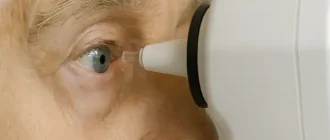As we grow older, it’s common to notice that the colors around us don’t appear as vibrant as they once did. What was once a bright red apple may now look slightly dull, and the deep blue of the sky can seem more muted. These changes can be gradual, but for many older adults, it becomes a source of concern or even frustration. This article explores why colors may look faded, the underlying causes, and what can be done to improve or adapt to this natural part of aging.
Why Do Colors Fade?
There are several factors that contribute to why colors may look less vibrant with age. Below, we’ll explore some of the most common reasons.
1. Lens Changes: The Yellowing Effect
As we age, the lens in our eye becomes less clear and starts to develop a yellowish tint. This naturally filters light, making colors—especially blues and greens—appear faded. Imagine looking at the world through sunglasses that have a yellow tint: colors aren’t as true or as bright as they should be.
2. Cataracts: Clouding the View
Cataracts are another age-related condition that causes the lens to become cloudy, further muting colors and reducing sharpness. It’s as if you’re seeing the world through foggy glass. The good news? Cataract surgery can often restore vibrant color vision.
3. Macular Degeneration: The Loss of Fine Detail
Age-related macular degeneration (AMD) affects the central part of the retina, which is responsible for fine detail and color perception. Over time, AMD can make it harder to see bright colors or distinguish between subtle shades.
Case Study 1: Margaret’s Muted Morning
Margaret, a 72-year-old woman, always loved tending her garden. She noticed that the bright tulips she planted seemed dull and less vivid. At first, she thought it was due to the weather, but over time, she realized that even her favorite red sweater seemed washed out. After visiting her eye doctor, she learned she had the beginning stages of cataracts. Following a successful surgery, Margaret was amazed to see the brilliant colors return to her garden.
Table: Common Causes of Faded Colors and Their Solutions
| Cause | Description | Possible Solution |
|---|---|---|
| Yellowing Lens | Natural lens discoloration due to aging. | Wearing color-enhancing lenses. |
| Cataracts | Clouding of the lens, reducing clarity and color. | Cataract surgery can restore color vision. |
| Macular Degeneration | Damage to central retina, affecting detail and color perception. | Managing AMD with treatment, healthy diet. |
| Reduced Light Sensitivity | Aging makes eyes less sensitive to light, muting colors. | Brighter lighting in homes, magnifiers. |
Case Study 2: James’ Fishing Adventures
James, an 80-year-old retired fisherman, loved spending his mornings by the lake, enjoying the serene water and catching his favorite fish. However, over the past year, he noticed that the vibrant colors of the water and the lures he used didn’t seem as bright. The deep blues of the lake and the distinct shades of his fishing gear began to blur together, making it harder for him to pick the right equipment. After adjusting the lighting in his fishing shed and using color-enhancing glasses, James found that he could once again appreciate the vibrant hues of the water and easily select the right lures. Even though his vision had changed, his fishing experience regained its clarity and joy.
Small Changes, Big Differences: Adapting to Faded Colors
While some changes in vision are inevitable with age, there are small adjustments that can make a big difference in how you perceive the world:
1. Improving Lighting:
Aging eyes need more light. Make sure your home is well-lit, especially in areas where color perception matters, like reading spaces or hobby areas.
2. Color-Enhancing Glasses:
Special lenses designed to enhance color contrast can help older adults see the world more clearly. These are especially helpful for those with cataracts or yellowing lenses.
3. Keep Regular Eye Appointments:
Staying on top of regular eye check-ups can help detect issues like cataracts or AMD early. Early intervention can preserve vision and improve your quality of life.
Emotional Well-being: Finding Joy in Subtle Colors
It’s easy to feel frustrated when the world around you seems to have lost some of its color. However, embracing the subtleties of color can also be a rewarding experience. With a few adjustments and a mindful approach, many people find new joy in everyday objects that they may have overlooked before.
For example, Betty, a 68-year-old baker, found that although she couldn’t see the bright colors of her frosting as well as before, she began to appreciate the textures and patterns more. This shift in focus helped her feel connected to her craft in a new way.
Conclusion: Seeing the World Anew
Changes in color perception are a natural part of aging, but they don’t have to diminish your view of the world. With simple solutions like better lighting, color-enhancing glasses, or cataract surgery, it’s possible to bring back some of that lost vibrancy. Even if colors appear faded, remember that life’s beauty often lies in the details we learn to appreciate with age.
By understanding the changes in your vision, you can adapt and continue to see the world through a lens of joy and appreciation.





